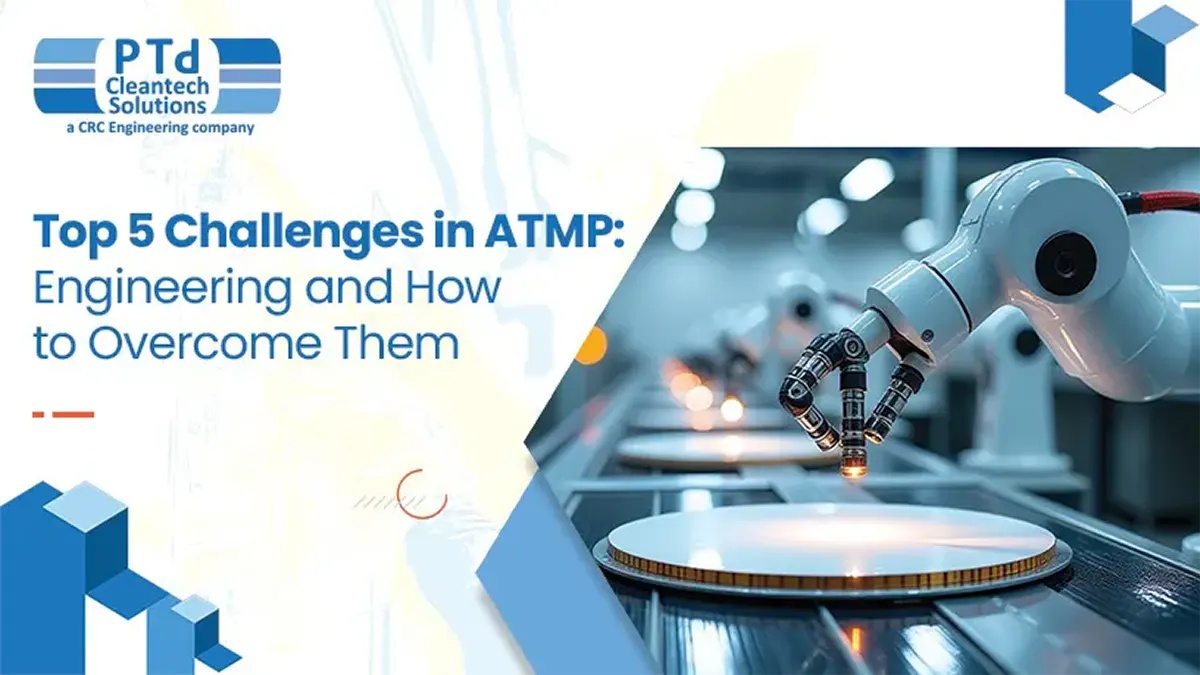
With the advent of Advanced Technology Manufacturing Processes, which is also known as ATMP engineering, industries like semiconductors, electronics, and pharmaceuticals have stood witness to an entire paradigmatic shift in the processes. However, this shifting domain poses new challenges that require out-of-the-box solutions. Adapting to these solutions is the key target for industries that look forward to meeting the requirements of the hour.
Let us have a look at the top five challenges that most establishments face in ATMP engineering and discuss the advanced approaches to address them.
1. Miniaturisation; Compactness through ATMP Engineering
Miniaturisation is perhaps the greatest challenge of ATMP engineering. While the devices get smaller and smaller, their manufacturing demands more complex techniques. It’s a very challenging situation in which engineers have to place intricate components within minimal space while achieving optimal performance.
Innovations in ATMP engineering such as advanced photolithography, wafer-level packaging, and 3D integration are proving to come in handy. By making the most of machine learning algorithms, refining design with fewer errors and increased efficiency can be achieved by predicting component behaviours in miniature environments.
2. Heat Management; Avoiding Overheating of Systems
With miniaturisation comes heat dissipation. In most HPC applications, enormous amounts of heat can affect the reliability of the component. Thermal management is an essential element that underlies successful ATMP engineering.
Engineers are looking into materials that have high thermal conductivity such as graphene and diamond-like carbon for cooling. Also, microfluidic cooling systems and improved thermal interface materials (TIMs) are turning out to be advanced cooling solutions in compact environments.
3. Ensuring Scalability Without Compromising Quality
Scaling up ATMP engineering processes leaves an avenue open towards compromising quality as they meet industrial needs. High volume is a delicate balance where many compromises are made on precision and performance.
Automation and robotics are taking the market by storm for scaling production. These technologies help to maintain consistency while reducing downtime. To add more to the table, modular designs and reconfigurable production lines help attain flexibility without having to compromise on quality.
4. Optimising the Costs in Processes
The fact that ATMP engineering often requires niche equipment and materials, it ends up being pricey. This would also exclude other small manufacturers and decrease profits for large firms.
Adopting lean manufacturing principles is practical. Costs can be cut down by quite an amount by applying techniques such as Design for Manufacturability (DFM) and optimising resource allocation. The budget for innovation gets balanced out by avoiding purchases of new equipment. Rather, upgrading existing ones allows the continuation of all the operations.
5. Staying on Track with Technology
With ATMP engineering evolving so fast, staying at par with the trend in itself is a challenge. Processes can easily become outdated and the upper hand can easily revert back if one falls behind.
Continuous learning and investing in R&D are a must. Collaboration with academic institutes and technology partners will open up new doors to advancement. In addition, adopting flexible systems which are capable of adapting to emerging technologies assures adaptability without having to repeat the entire process to adhere to the changing trends.
The Future of ATMP Engineering
ATMP engineering encompasses all the dynamic challenges a field can bring. As such, though innovation has its challenges, it stands a chance of becoming great when sustainability and efficiency are addressed. Technologies that are considered future trends in AI-driven optimisation, sustainable materiality, and quantum-inspired manufacturing processes are bound to transform the field into dimensions beyond what one would think was possible.
ATMP engineering is not a technical pursuit alone but a path of solving problems and adjusting. With these challenges confronted, engineers can pave their way toward transformative solutions for the industries of the world. All of this when put together will help professionals working with ATMP engineering embrace smoother solutions in challenging fields, to continuously progress and be successful.
